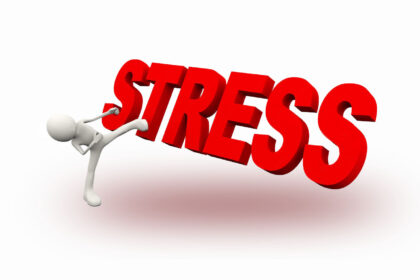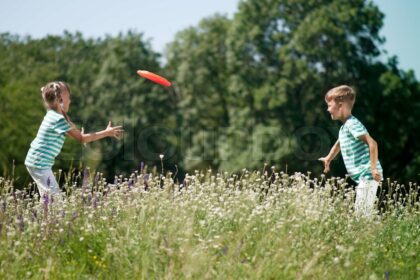Written by Dr. Madalyn Otto
Thanksgiving was always my favorite holiday growing up. There was no pressure, no scrambling to buy dozens of presents, no long lines or crazed consumers. Instead, we would begin hosting aunts, uncles and cousins at our house Wednesday night and spend the next 72 hours together cooking, eating, laughing, and loving one and other. There is some speculation that the reason Thanksgiving yields a greater number of reports of happiness and calm than other popular holidays is because of this phenomenon: The practice of being thankful without the excess stress and the bustle that other holidays tend to provoke. I think this month is as good a time as any to remind ourselves of the benefits of gratitude.
Practicing gratitude is just one of many exercises within the umbrella of meditation. Now that I have tried several techniques including gratitude meditation, I happen to think it’s one of the “easiest” ways of incorporating meditative practice into one’s daily life. I began my own formal meditation practice only after I had finally read “enough” articles about its many benefits on mood, cognition and long-term health. I decided to try it out. For an eight-week period during the cold and dreary winter, I dedicated myself to partaking in a guided or self-guided mindfulness meditation 20-30 minutes per night on my living room couch, 7 days per week. The results I experienced were so phenomenal, I could scarcely believe it. I kept a calendar-journal during this time documenting my mood, energy levels and anxiety levels each day, and I was able to see without a shadow of a doubt the vast improvements in each category that occurred such a short amount of time. **Full disclosure: It wasn’t my first time meditating. While I had never engaged in a formal routine like this, nor stuck with it consistently, I did grow up with a mother who took me with her to meditation classes from time to time, so I was familiar with the practice and had some minor experiences with clearing my mind and being aware of the present.
That initial eight-week period taught me the power of mindfulness. My experience of it was an overall decrease of stress, adrenaline rushes, anxiety, stimulation and self-critique. Using other experts’ analogies as inspiration, I started to consider this effect “clearing the field”. This process is similar to a deep-clean of your home. When you walk into a room that has been unattended to for some time, it is overwhelming. There is clutter everywhere, dust, old magazines, fingerprints on the walls, dirty clothes, etc.. What do you do when this happens? Answer? Clear the room. You move all the objects, the furniture, the wall paintings and the lamps and you run over everything with rubber gloves on and a bucket of soapy water by your side. When it comes to your brain, meditation removes all the clutter, the excess, the dust. But what I noticed as my mindfulness meditation practice evolved into a maintenance schedule that I practiced for 15-20 minutes 4-5x per week is that I now had this relatively “clear field” on which to build whatever I wanted.
Borrowing again from an expert’s analogy (specifically Rick Hanson, PhD), it seemed logical for me to now start “growing flowers” on that field. Most of us have gotten really good at growing weeds. We criticize ourselves and others, we judge ourselves, we experience daily stress, feeling like we don’t measure up, like we could always do more; we may re-experience past traumas or continue to interpret or react to people and events in our environment through a negative lens. All of these things “grow weeds” as Dr. Hanson says in his book Hardwiring Happiness. I felt that mindfulness meditation helped me continuously pull those weeds or said another way, clean out the messy room. Gratitude is what helped me start to grow flowers instead of weeds and re-decorate the new room as I saw fit.
Gratitude can be as simple as saying out loud a list of things that you’re grateful for every day and deliberating on each one for 10 seconds or so. At the beginning, I found this to be a challenge because it seemed odd, or maybe even disingenuous. But with practice, I got better at it. I felt the gratitude in my body and my mind more clearly each week. I started out with basic things: I’m grateful for my family. I’m grateful for my office staff. I’m grateful for my home. Sometimes I was grateful for little things: I’m grateful for my tea kettle and the sound it makes when the hot water is ready. I’m grateful for my bicycle. I’m grateful for the hiking trail near my house. With even more practice, I could be grateful for my strengths (typically hard for many of us to acknowledge): I’m grateful for my brain. I’m grateful for my ambition to learn. I’m grateful for my integrity. The more frequently I practiced this, and the more seconds I spent letting each object of my gratitude sink into my brain, the more heightened the effects. It was becoming easier and easier to automatically feel good effortlessly each day.
Most studied forms of meditation practice promote similar effects on the brain and mind. These changes are really incredible when you think about it. Deep-cleaning your thoughts and redecorating your emotional brain-space literally changes what your brain looks like and the way it functions! When a person begins a meditation practice, neurochemistry begins to shift rather quickly. We see a decrease in the rate of depression and anxiety within weeks. There is predictable increase in academic GPAs in students who meditate. Sleep quality quickly improves with indications of increased REM (dream sleep) and slow-wave sleep. Gratitude specifically can increase dopamine and serotonin levels – your “happy hormones”. When an individual meditates on a regular basis for a prolonged period of time, the brain physically changes: the “stress-center” of the brain (the amygdala) will increase in size and neural activity, the part of the brain responsible for memory increases in volume, brain tissue ages much more slowly, and the center of the brain responsible for mind-wandering decreases in activity. There is no natural or pharmaceutical pill on the market that can accomplish this!
In a stress-ridden society, virtually everyone can benefit from some form of meditation practice. While I personally have found an incredible sense of balance and calm in my own life from establishing the practice I described above, that doesn’t mean it’s the right prescription for everyone. Even shorter periods of expressing gratitude alone, for example, can create noticeable benefit relatively quickly and can be practiced while you’re in the shower, driving in the car, or getting ready for bed at night. My new favorite book on the topic, in case you couldn’t guess, is called Hardwiring Happiness by Rick Hanson. I think he does a phenomenal job of describing the chemistry behind stress and stress reduction so that you can understand how to find the right exercises for you. He also explores fantastic exercises to pick from. I have been recommending this book left and right since I came across it, and I hope you are inclined to give it a look too. I also recommend exploring the classes offered by the Center for Health Promotion through Concord Hospital including Mindfulness-Based Stress Reduction or a one-on-one meditation coaching session also offered through the Center.
I hope all our readers have a gratitude-filled November!
In Health,
Dr. Otto




